This post is also available in:
Français (French)
Español (Spanish)
Welcome to our all-encompassing adopting a dog Guide, crafted to offer you significant knowledge and tips for bringing a new furry friend into your life.
Adopting a rescue dog is an incredibly rewarding experience, but it’s essential to be well-prepared for the journey ahead.
In this guide, we’ll examine the lifestyle considerations, time commitment and training requirements that come with adopting a pet.
We’ll investigate the effects that your day-to-day life, family structure, and leisure activities can have on your capability to look after a new canine companion.
Furthermore, we’ll discuss the time commitment required for proper exercise, training routines necessary for well-behaved pets, grooming needs based on breed type and size considerations when selecting the right breed for you. Our Dog Adoption Guide also covers financial responsibilities associated with pet ownership including monthly costs estimates and unexpected medical expenses in case of emergencies.
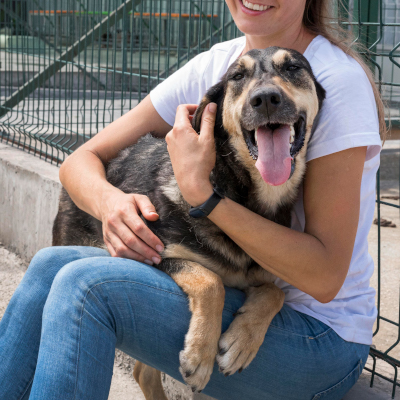
We will help you prepare your home by creating safe indoor environments free from hazards or potential dangers while designing outdoor spaces suitable for exercise and play. Additionally, we’ll address long-term care commitments like understanding lifespan expectations across breeds as well as common health issues in dogs as they age.
Finally, our guide will walk you through the adoption process itself by providing tips on researching reputable rescue organizations while ensuring successful meet-and-greets with potential adoptees. So let’s get started!
Assessing Your Lifestyle
Before adopting a dog, it’s crucial to evaluate your lifestyle and determine if you can provide the right environment for a furry companion.
Think about aspects like your job, family life and social engagements that may have an effect on if you can give the right care to a pet.
Work-life balance and its effect on pet ownership
Job hours are a major factor in deciding if you can look after a pup properly. If you have long working hours or frequently travel for business, it might be challenging to give your new furry friend the attention they need. In such cases, consider hiring pet sitters or using doggy daycare services.
Alternatively, discuss with friends or family members who could help look after your pet during busy times.
Family dynamics and introducing a new dog into the household
If you have children or other pets at home, think about how they will interact with the newly adopted dog. For families with young kids, some breeds are more suitable due to their gentle nature and patience (e.g., Golden Retrievers), while others may need extra supervision (e.g., Chihuahuas).
- Talk openly: Have open discussions within your family about everyone’s expectations regarding responsibilities towards the new addition.
- Pet allergies: Ensure no one in your household has severe allergies related to animals before adopting a dog.
- Existing pets: Consider the temperament of your current pets and how they might react to a new companion. Consult with a veterinarian or professional trainer for guidance on introducing dogs successfully.
Social activities that might interfere with proper pet care
Your social life can also impact your ability to provide adequate care for an adopted dog. If you frequently attend events, parties, or travel often, consider whether these commitments will affect your capacity to meet your dog’s needs. Finding a harmony between having some “me time” and guaranteeing your pooch’s prosperity is fundamental.
- Pet-friendly outings: Look for opportunities where you can include your dog in social gatherings such as outdoor picnics or visiting pet-friendly cafes and restaurants.
- Dog parks: Regular visits to local dog parks not only provide exercise but also help socialize them with other dogs and people while still allowing you some leisure time outdoors.
- Prioritize responsibilities: Be prepared to make sacrifices when necessary – sometimes skipping certain events in favor of caring for your canine companion’s needs may be required.
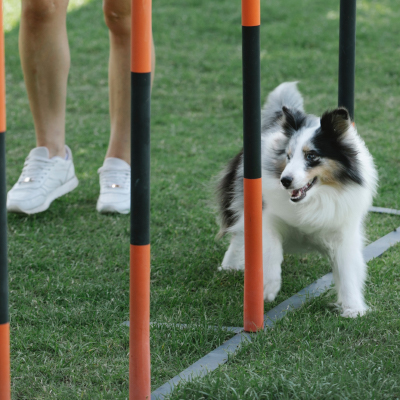
When assessing your lifestyle for pet ownership, it is important to consider the impact of work-life balance, family dynamics and social activities on providing proper care.
When considering a dog adoption, an understanding of the time commitment involved in daily exercise routines, training requirements and grooming needs are essential components to ensure successful pet ownership.
Assess your lifestyle before adopting a dog to ensure you can provide the right environment for them. Weigh up the effect of your daily routine, family set-up and leisure pursuits on your capability to provide for a pet. Share on XTime Commitment of Dog Ownership
Owning a dog requires a significant time investment to ensure your adopted furry friend receives the proper attention they deserve. From training and exercise to grooming, feeding, and bonding, it’s essential to be prepared for dedicating enough time each day.
Importance of Daily Exercise for Dogs’ Physical Health
Daily physical activity is necessary to maintain your pup’s health and wellbeing. Regular walks or playtime can help prevent obesity, improve cardiovascular fitness, strengthen muscles and joints, reduce stress levels, and increase mental stimulation.
Here is a general guideline:
- Small breeds: At least 30 minutes per day
- Medium-sized breeds: Between 45 minutes to an hour per day
- Giant breeds: Around one hour per day
The amount of exercise required depends on the breed, size, age, and general health.
Training Requirements for Well-Behaved Pets
In addition to regular exercise routines you should also invest in obedience training sessions that will teach basic commands like “sit,” “stay,” “come” while promoting good behavior manners around people other animals alike. This process takes patience consistency but pays off long run by creating harmonious living environment both owner pet alike ensuring everyone stays happy safe throughout their lives together. For more information about effective training methods check out resources provided by organizations such as the Victoria Stilwell Academy or Certification Council for Professional Dog Trainers (CCPDT).
Grooming Routines Necessary for Maintaining Hygiene
Maintaining hygiene requires regular grooming of your dog, such as brushing their coat, trimming nails, cleaning ears and bathing. Grooming routines include brushing their coat to remove loose hair and prevent matting, trimming nails to avoid overgrowth and discomfort, cleaning ears to reduce the risk of infection, and bathing as needed depending on breed type or activity level. For example some breeds require more frequent grooming sessions than others due differences in coat types such as Poodles Golden Retrievers who may need professional help every 4-6 weeks whereas short-haired dogs like Beagles Dalmatians can go longer between appointments.
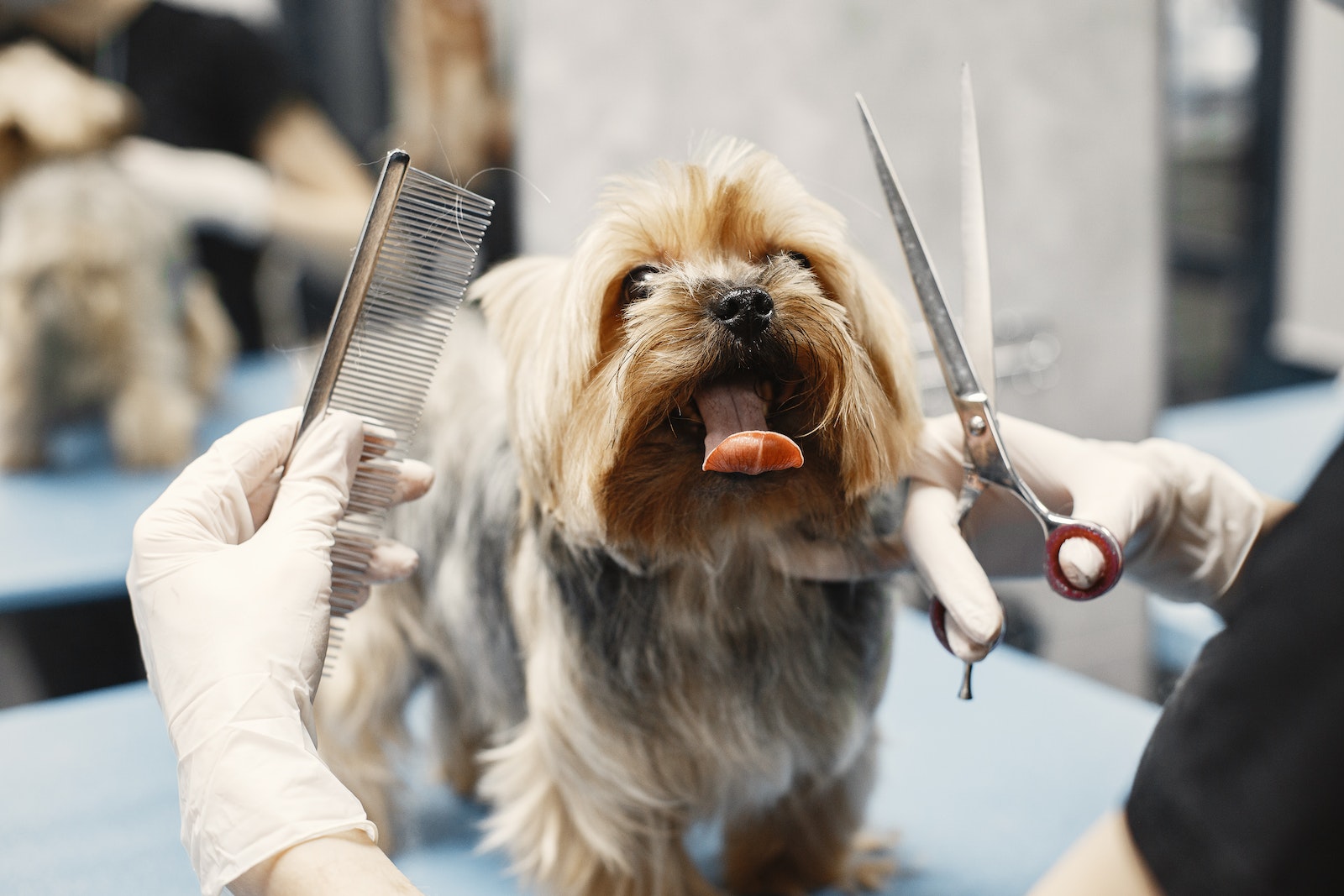
Contemplating the effort demanded by a canine proprietorship is essential prior to making any decisions, as it can be quite strenuous. Therefore, financial responsibilities of pet adoption should also be taken into account when considering taking on this responsibility.
Adopting a dog requires a significant time investment for training, exercise, and grooming to ensure their physical health and overall well-being. Share on XFinancial Responsibilities of Pet Adoption
Adopting a dog comes with various financial responsibilities like food costs, veterinary bills (including vaccinations), grooming expenses, toys or accessories needed. Ensure you have an adequate budget set aside before bringing home your new best friend.
Unexpected Medical Expenses in Case of Emergencies
In addition to routine medical care and vaccinations, it is essential to be prepared for unexpected medical emergencies that could arise throughout your pet’s life. Some common health issues include ear infections, skin allergies, dental problems and injuries sustained during playtime or accidents. To help mitigate these unforeseen costs,

- Create an emergency fund specifically designated for your pet’s healthcare needs;
- Purchase pet insurance which covers accidents and illnesses; check out providers such as Nationwide Pet Insurance or Petplan;
- Maintain regular veterinary check-ups to catch potential health issues early.
Taking these steps will ensure you are financially prepared for the responsibility of dog ownership and can provide your new furry friend with a stable, loving home throughout their life.
Considering the cost of pet ownership is essential when deciding which breed to get, as it can significantly impact your lifestyle. With that said, another important aspect when selecting a pet is choosing the right breed for you and understanding their size considerations and temperament traits.
Be a responsible pet parent. Before adopting a dog, ensure you have the budget for their monthly expenses and unexpected medical emergencies. #dogadoption #petcare Share on XChoosing the Right Dog For You
This will help you decide which type is most suitable for your lifestyle based on factors such as size compatibility with living space constraints or specific temperament preferences aligned with your personality. By understanding various types of dogs attributes, you can make an informed decision about the best furry companion for you and your family.
Size Considerations When Selecting Breed Type
When selecting a breed type, it’s important to factor in the size of both indoor and outdoor spaces available as this will determine whether smaller breeds such as Pugs or Chihuahuas are suitable for apartment living, or if larger dogs like Golden Retrievers or German Shepherds need more room.
Temperament Traits Associated With Popular Breeds
Beyond physical considerations, each dog breed has its unique temperament traits that should align well with your personality and lifestyle needs. Some popular examples include:
- Affectionate: Breeds like Labrador Retrievers are known for being loving companions who thrive on human interaction.
- Energetic: If you lead an active lifestyle, consider adopting a breed like the Border Collie or Australian Shepherd that requires plenty of exercise and mental stimulation.
- Low-maintenance: For those seeking a more laid-back companion, breeds such as Greyhounds or Basset Hounds may be ideal due to their lower energy levels and minimal grooming requirements.
- Protective: Breeds like Rottweilers or Doberman Pinschers are known for being loyal protectors of their families, making them excellent choices for individuals seeking added security at home.
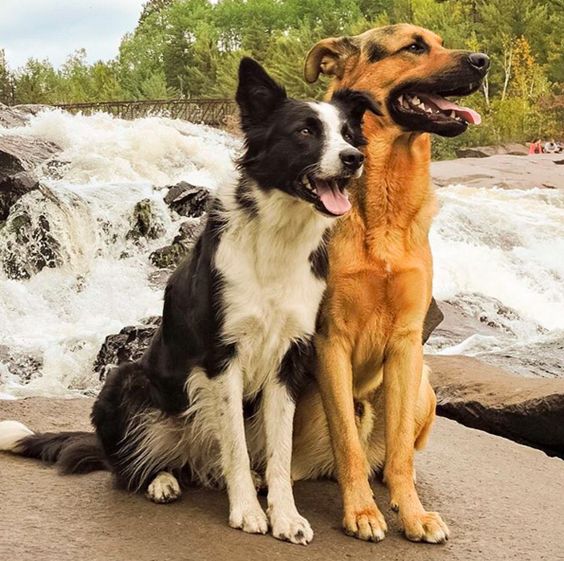
When picking a type of dog, one should think about the size of their dwelling and way of life in addition to the character traits connected with popular breeds. Preparing your home for a new dog involves creating safe indoor environments free from potential hazards and designing outdoor spaces suitable for exercise and play.
Preparing Your Home For A New Dog
Before introducing your canine companion to the family, it’s important to make sure that their needs are met by establishing a safe and comfortable environment.
Creating designated spaces specifically designed for catering to the needs of your adopted canine friends is crucial.
This includes setting up cozy sleeping areas and providing secure outdoor enclosures that keep them contained during unsupervised times outside playtime.
Creating Safe Indoor Environments Free of Hazards and Potential Dangers
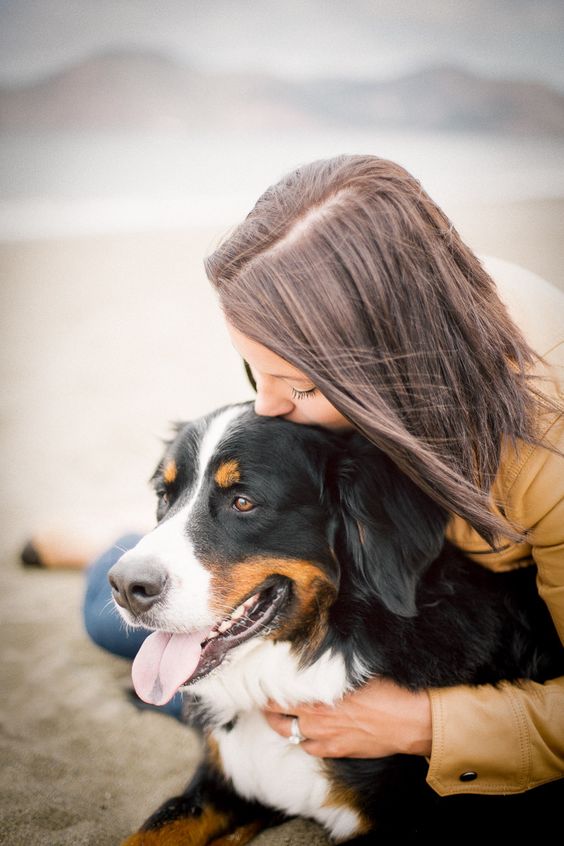
Making sure your home is a safe environment for your new dog involves identifying potential hazards and removing or securing them appropriately.
Here are some steps you can take:
- Puppy-proofing: Just like baby-proofing, puppy-proofing involves covering electrical outlets, securing cords, removing toxic plants, and storing cleaning supplies out of reach.
- Floor hazards: Remove small objects such as toys or shoes that could be choking hazards. Ensure rugs have non-slip pads underneath to prevent accidents.
- Gates or barriers: Install gates in doorways if needed to restrict access to certain rooms or staircases where they may get injured.
- Create a designated space: Set up a comfortable area with bedding, food/water bowls, toys, etc., so they feel at ease in their new surroundings. Consider using a crate if appropriate for training purposes.
Designing Outdoor Spaces Suitable for Exercise and Play
A well-designed outdoor space not only provides an excellent opportunity for exercise but also helps stimulate mental health through exploration and playtime activities.
Here are some tips on creating an ideal backyard environment for dogs:
- Fencing: Ensure your yard is securely fenced to prevent escapes. Check for gaps or weak spots in the fence and repair them as needed.
- Shade: Provide shaded areas where your dog can rest during hot weather, such as under trees or a patio umbrella.
- Fresh water: Always have fresh water available outside for hydration purposes, especially on warm days.
- Toys and enrichment: Offer various toys like balls, ropes, or interactive puzzles that encourage physical activity and mental stimulation. Consider installing a small agility course if space allows.
In addition to preparing your home environment for your new canine companion, it’s essential to research local pet-friendly parks and trails nearby. Regular outings will provide additional opportunities for exercise and socialization with other dogs.
Making ready your domicile for a pup can help guarantee both you and the animal have an enjoyable experience. Now let’s look at what is required in terms of commitment to long-term care when adopting a canine companion.
Preparing your home for a new dog involves providing shaded areas, fresh water, toys/enrichment and researching local pet-friendly parks/trails nearby. Share on XCommitment to Long-term Care
Committing to a canine companion for the duration of their life requires preparation to provide love, care, and support in order to address any health or behavioral issues that may arise.
Be prepared to provide love, care, and support throughout their lifetime, including addressing any health issues or behavioral challenges they may face.
In this section, we will discuss understanding lifespan expectations for various breeds and common health issues in dogs as they age.
Understanding Lifespan Expectations for Various Breeds
Different dog breeds have varying lifespan expectations, which can be an essential factor when considering adopting a new furry friend.
Larger breeds may not have as lengthy a lifespan compared to their smaller counterparts; however, there are exceptions. For example:
- Small Breeds: Chihuahuas and Toy Poodles typically live between 14-18 years.
- Medium Breeds: Labrador Retrievers and Golden Retrievers usually have lifespans ranging from 10-12 years.
- Giant Breeds: Great Danes often live only up to around eight years due to their size-related health concerns.
Becoming familiar with your chosen breed’s expected lifespan can help you prepare mentally and financially for the time you’ll spend together.

Addressing Common Health Issues in Dogs as They Age
As dogs age, they are prone to certain health issues. It’s crucial to recognize these potential issues early on so that you can take appropriate measures before complications arise. Some common age-related conditions include:
- Arthritis: Joint pain and stiffness are common in older dogs, especially larger breeds. Regular exercise, weight management, and joint supplements can help alleviate symptoms.
- Dental Disease: Dental issues like gum disease or tooth decay may develop over time. Schedule regular dental checkups with your veterinarian to maintain good oral health.
- Vision Loss: Cataracts or glaucoma can cause vision impairment in aging dogs. Consult a veterinary ophthalmologist for diagnosis and treatment options.
In addition to these conditions, it’s essential to monitor your dog’s overall well-being as they age. Keep an eye out for any changes in behavior or appearance that might indicate a potential health issue – early detection is key.
Maintaining a strong commitment to long-term care ensures that you provide the best possible life for your adopted canine companion throughout their entire journey with you. By understanding lifespan expectations of various breeds and addressing common health issues as they arise, you’ll be better equipped to navigate the challenges of pet ownership while enjoying many happy years together.
Taking on the responsibility of long-term care for a canine companion should not be done without due consideration. With the right research and preparation, finding your perfect match through adoption can become a rewarding experience.
The Adoption Process and Finding Your Perfect Match
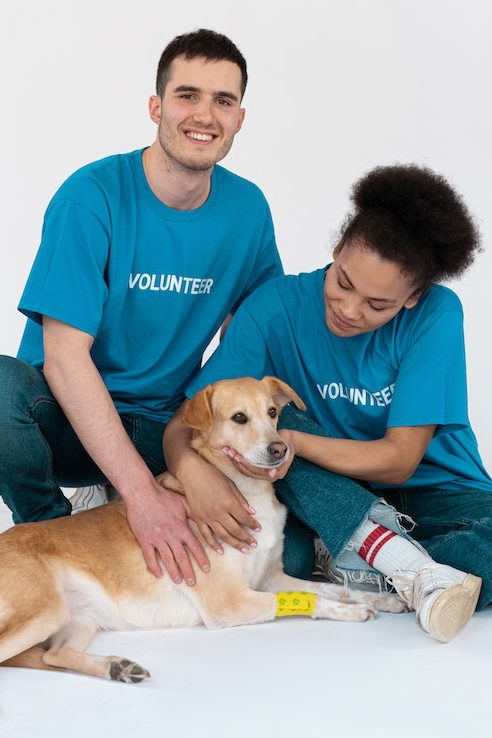
Adopting a dog is an exciting journey, but it’s essential to familiarize yourself with the adoption process at local shelters or rescue organizations like Bone Voyage Dog Rescue. By understanding the steps involved in adopting your new furry friend, you can ensure a smooth transition for both you and your future pet. Here are some tips on finding the perfect match for you and your family.
Researching Reputable Adoption Centers and Rescues
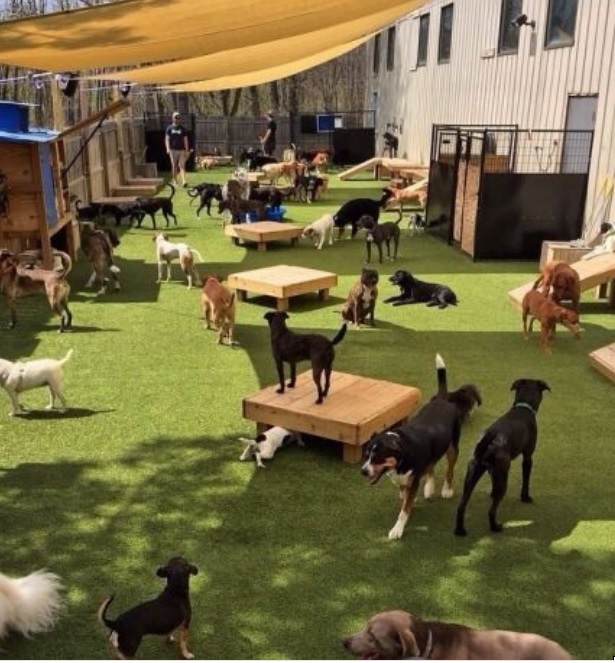
- Ask for recommendations: Reach out to friends, family members, or coworkers who have adopted pets before. They may be able to recommend reputable shelters or rescues in your area.
- Read reviews online: Check websites such as Yelp or Google Reviews to see what others have said about their experiences with local adoption centers.
- Contact veterinarians: Veterinarians often work closely with animal shelters and rescues; they may know which organizations prioritize animal welfare and provide excellent care.
- Evaluate transparency:A trustworthy organization should be transparent about its policies, fees, medical records of available dogs, and any known behavioral issues. Do not be afraid to inquire.
Tips for Successful Meet-and-Greets With Potential Adoptees
- Schedule an appointment: To ensure adequate time spent getting acquainted without feeling rushed during meet-and-greet sessions contact shelter arrange visit advance allowing ample opportunity interact potential adoptee while also receiving guidance staff member present throughout interaction ensuring comfortable environment everyone involved.
- Bring family members and other pets: If possible, bring along any other household members or pets who will be living with the new dog. This helps ensure compatibility between all parties involved.
- Observe body language: Pay attention to both your own and the dog’s body language during the meet-and-greet. Look for signs of relaxation, curiosity, and engagement from the dog as positive indicators of a potential match.
- Avoid rushing into a decision: It may take several visits to find the perfect canine companion for you and your family. Don’t feel pressured to make an immediate decision; it’s essential that everyone feels comfortable with their choice before moving forward in adoption process
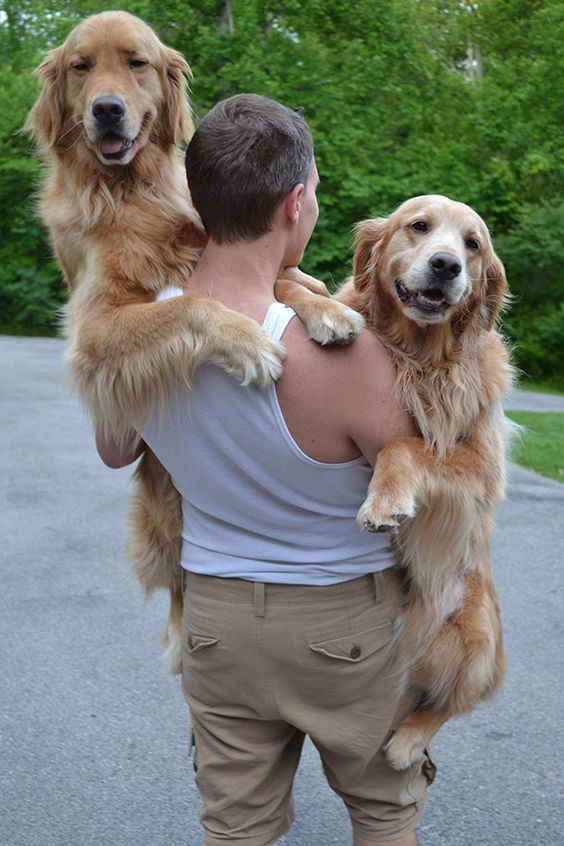
Taking time to research reputable adoption centers like Bone Voyage Dog Rescue, understanding their processes, and following these tips for successful meet-and-greets can help ensure that you find your perfect furry friend. Remember: patience is key when searching for a lifelong companion.
What is the 3 3 3 rule when adopting a dog?
The 3 3 3 rule refers to a guideline for helping newly adopted dogs adjust to their new homes.
It suggests that it takes approximately three days for the dog to settle in, three weeks for them to become familiar with routines and surroundings, and three months for them to feel fully comfortable and secure.
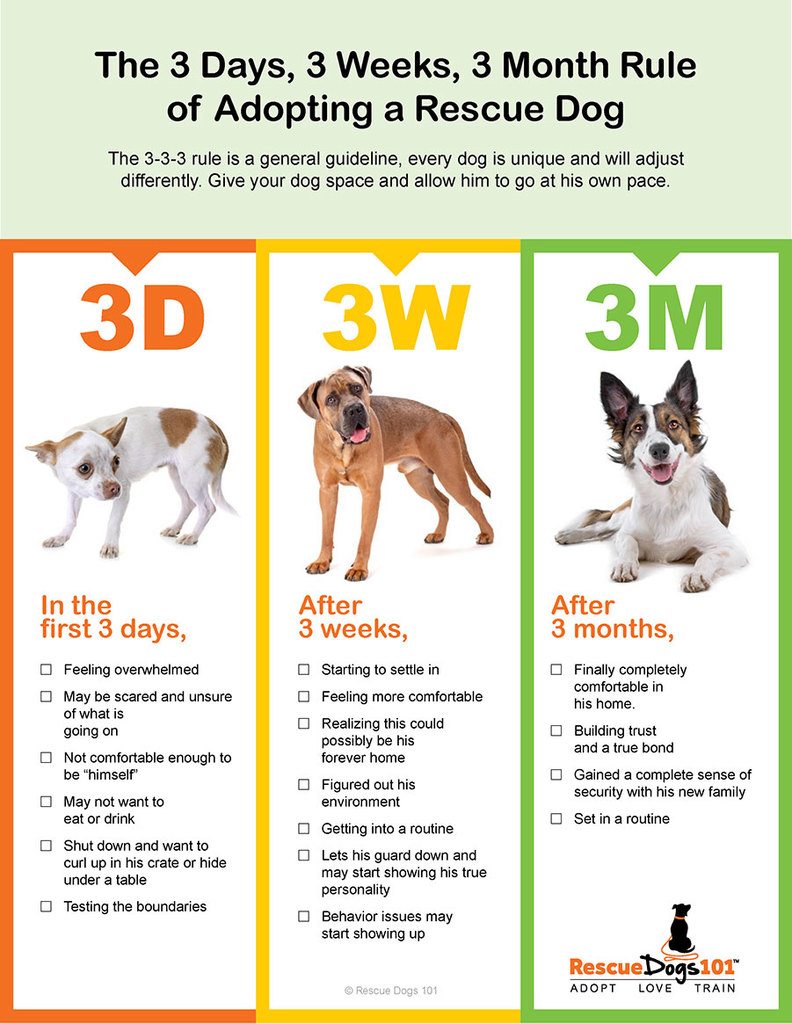
Frequently Asked Questions Dog Adoption Guide
Why should you adopt a dog?
Adopting a dog has numerous benefits, including saving lives by providing homes for shelter animals, reducing overpopulation through spaying/neutering programs, finding companionship at any age or lifestyle stage, and often obtaining pets that have already received basic training or medical care.
How do you write a good dog adoption bio?
To write an effective dog adoption bio, focus on positive traits of the animal (such as temperament or skills), use engaging language that appeals emotionally to potential adopters, provide essential information about health status or special needs if applicable, include high-quality photos showcasing personality and appearance.
What is the most important consideration when adopting a dog?
The most crucial factor when adopting a dog is ensuring compatibility between your lifestyle and the pet’s needs. Consider factors such as size restrictions in living spaces, time commitment for training and exercise, financial responsibilities, and the dog’s temperament to ensure a successful match.
Conclusion
Dog adoption is a rewarding experience, but it also comes with responsibilities. This guide has provided you with the necessary information to determine if dog adoption is suitable for your lifestyle, and we wish you luck in finding a perfect match and beginning this rewarding journey. Good luck in your search for the ideal pup, and embarking on this life-altering voyage! Remember that when done properly, dog adoption can be life-changing – both for yourself and the animal who will now have their forever home.
If you’re looking to adopt a loving and loyal canine companion, consider giving one of Bone Voyage’s rescued Mexican dogs or puppies a forever home. Together we can make sure that these homeless animals get the second chance they deserve.
